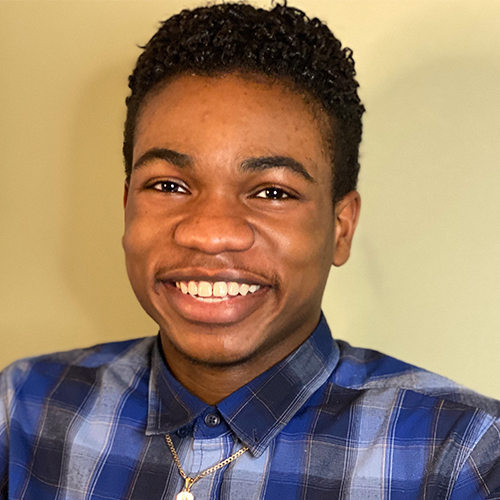 |
Ololade Abdulai ’23Chemical Engineering Advisor: Karthish Manthiram, Warren K. Lewis Career Development Professor, Chemical Engineering Electrochemical lactonization of ketones using water as an oxygen atom source Industries involved in the synthesis of products such as pharmaceuticals and polymers require lactones for the intermediate reactions of their processes. Current industrial methods of producing lactones create by-products that are detrimental to the environment. My work in the Manthiram Lab has been focused on finding ways to reduce the negative effects of this process by using water and electrochemistry. During my UROP, I synthesized platinum particles to use as catalysts in the electrochemical reactions, and I studied the reaction to see how effective the particles were at facilitating the reaction. I found that the amount of charge put in was converted to product at 15% efficiency. I gained an increased understanding of electrochemistry and how it relates to the real world, and I hope to do more work in this field in the future. |
 |
Tevita Akau ’22Business Analytics Advisor: Robert C. Armstrong, Director, MIT Energy Initiative Database creation for developing a tool to perform system-level energy analysis The United States energy grid system is excessively complex because the architecture of power plants often differs across all levels of a power plant: unit level, generator level, and plant level. I worked to synthesize the organization of the power plants into a coherent data structure that allows for optimization across different metrics, such as emissions. Utilizing the EGRID 2016 dataset, I developed a software package in Python that allows for successful integration of generator system data into unit system data, which logically structures energy datasets for system-level techno-economic data analysis, insights, and visualization across energy systems. I uncovered inefficiencies in combined cycle plants concerning the fluctuation of capacities; and gained soft skills in working with teams and technical skills related to data science. My work has inspired me to pursue a clean energy career path. |
 |
Alexander Alabugin ’20Chemistry Advisor: Yogesh Surendranath, Paul M. Cook Career Development Associate Professor, Chemistry Heterogeneous oxidation catalysis by iron in the single-atom limit Most organic chemicals, from pharmaceuticals to commodity plastics, ultimately come from petroleum. However, hydrocarbons lack chemical “handles” (heteroatoms and functional groups) that allow them to be easily converted into complex and valuable molecules. As a result, catalysts that selectively oxidize hydrocarbons into alcohols and other commodities are highly prized. Over IAP 2020, I further developed an oxidation catalyst I created during my previous terms with the MIT Energy Initiative: an iron porphyrin covalently coupled to the “sea” of electrons in graphitic carbon nanoparticles. I draw direct inspiration from the biochemistry of selective oxidations in the body: Iron heme porphyrins are essential components of enzymes that degrade various drugs in the liver and synthesize steroid hormones in the adrenal glands. To understand the scope of activity of my catalyst, I evaluated its reactivity with toluene under pressurized flows of oxygen and spectroscopically tracked the oxidation of phenols to distinct radical intermediates. |
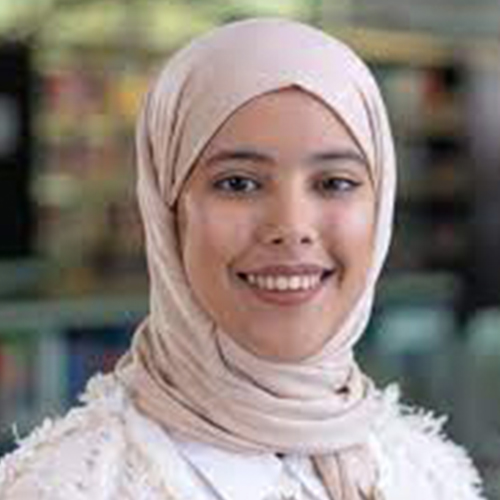 |
Aljazzy Alahmadi ’23Mechanical Engineering Advisor: Michael P. Short, Class of ’42 Associate Professor of Nuclear Science and Engineering Non-destructive analysis of thermal degradation of 204-type (CF8) and 304L-type (CF3) cast austenitic stainless steels The sustainability of nuclear power plants using light water reactors (LWRs) are threatened by the embrittlement of cast austenitic stainless steels (CASS) found in their primary piping structures. During my UROP, I worked on developing transient grating spectroscopy (TGS) to be a reliable method to assess thermal embrittlement of CASS structures in reactor-like thermal conditions. I found that a peak split in the TGS signal is correlated with thermal aging of CASS CF3 samples, which with further testing could be linked to thermal embrittlement of CASS. This opens room for TGS to be used as a method to monitor and assess embrittlement in LWR CASS structures live, while the power plant is operating, enhancing LWRs safety and maximizing their lifetime. Through my UROP, I have learned that research takes time and effort (among many other things) to become a reality, and that it’s important for me to appreciate the small steps I am taking to find meaning in my work. |
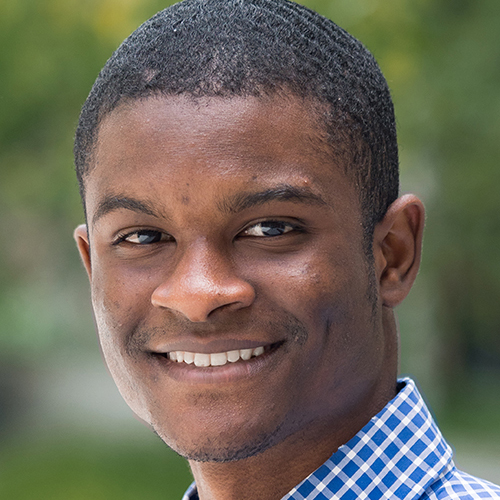 |
Mohamadou Bella Bah ’21Electrical Engineering and Computer Science Advisor: Anuradha Annaswamy, Senior Research Scientist, Mechanical Engineering A service-oriented architecture for the electric distribution grid Current trends point toward an electric grid that will be characterized by a large number of distributed energy resources (DERs). DERs encompass assets such as solar panels, electric vehicles, and batteries. At high levels of penetration, DERs, which may be intermittent, disrupt conventional grid planning and hamper the real-time control of the grid. Through a “service-oriented” communications platform developed in prior research, we demonstrate how privately owned solar panels can partner with privately owned batteries to form a hybrid asset. My work demonstrates that the coordinated control of DERs could plausibly and significantly improve the resilience of electric grids and maximize the value of existing assets, such as that of solar panels and batteries. My research furthered my understanding of electricity grids and markets and multi-agent systems, as well as the architecture needed to manage them. |
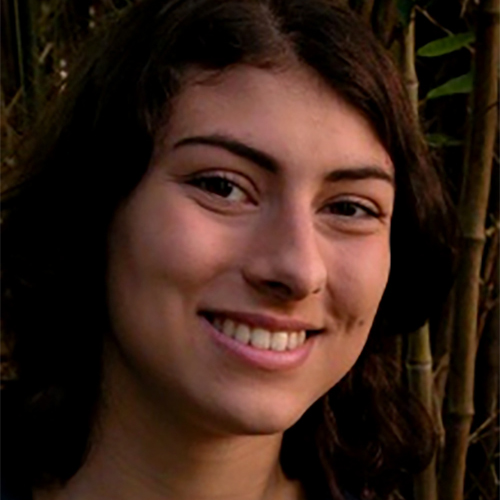 |
Clio Batali ’21Materials Science and Engineering Advisor: Tonio Buonassisi, Professor, Mechanical Engineering Degradation and capping layer protection in hybrid perovskite photovoltaic materials I worked within the MIT Photovoltaics Research Laboratory on quantifying and improving the life-span of organic-inorganic hybrid perovskite solar cell technologies. I fabricated sample films for degradation tests and characterized the material phases present using X-ray diffraction techniques in order to elucidate the chemical decomposition that occurs over time. This research is useful in optimizing highly efficient, long-lasting solar cells made with cheap perovskite “recipes.” I was able to determine the relative structural/photoelectronic changes of different thin-films, all while learning valuable theory for semiconductor physics and how to tie theory together with optical observations in order to create a complete picture of the degradation process. |
 |
Madeline Bundy ’21Chemical Engineering Advisor and Direct Supervisor: Emre Gençer, Research Scientist, MIT Energy Initiative Technoeconomic analysis of fuel cells This project investigated the economic viability of methanol fuel cell vehicles as a potential path to help decarbonize the transportation sector. Methanol fuel cell vehicles not only have reduced emissions, but have a liquid-based fuel, which makes the transition much easier on the supply chain as well as the consumer. To transition to methanol fuel cell vehicles, the vehicle has to be relatively inexpensive. I determined how expensive these vehicles would be, as well as conducted life cycle assessments to understand the environmental impact. |
 |
Ben Burke ’22Chemical Engineering Advisor: Yang Shao-Horn, W.M. Keck Professor of Energy, Materials Science and Engineering Dielectric relaxation spectroscopy Polymer electrolytes offer an immense opportunity to increase the safety and reduce the cost of electrochemical energy storage technologies, including batteries and fuel cells. My lab has been utilizing a combined computational-experimental screening approach to accelerate fundamental research on polymer functionality to overcome the limitations of these materials, which include lower ionic conductivity than liquid and solid ceramic electrolytes, and lack of chemical stability. My work focused on obtaining experimental measurements of relaxation times of electrolyte materials using a dielectric relaxation analyzer to help apply new ideas surrounding solution dynamics to our understanding of ion transport. This understanding could help to advance lithium-ion battery research and introduce a tool that hasn’t yet been utilized much in this field. My findings will soon be published in a paper, which will both validate this experimental technique and combine computational and new experimental data to further a discussion on ionic activity through the lens of lithium-ion liquid electrolyte solutions. |
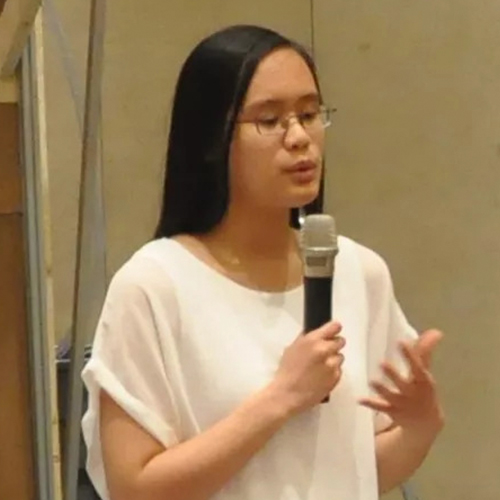 |
Patricia Chan ‘22Mechanical Engineering Advisor: Leslie Norford, Professor, Architecture Surrogate models and code optimization for heat-resilient neighborhood design Extreme heat events are becoming increasingly common because of climate change and are exacerbated by urban living conditions that disproportionately impact lower income communities. This project tackled the problem of designing heat-resilient cities by developing modeling assessment tools that simulate the thermal conditions and energy use of an urban neighborhood. This will help urban planners with early planning to mitigate these life-threatening extreme heat events. |
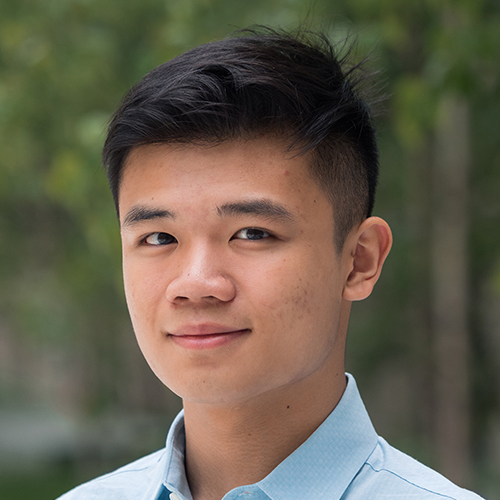 |
Shuxin Chen ’22Chemical Engineering Advisor: Heather J. Kulik, Associate Professor, Chemical Engineering Utilizing machine learning to expedite functional material discovery Transition metal complexes (TMC) and their potential in various energy storage systems have grown exponentially in recent years. Depending on various properties, these functional materials can have boundless usages. As a result, many new materials lie in these complexes, especially in the field of energy storage, usage, and application. I worked with Professor Kulik and Chenru Duan on exploring the functional sensitivities of various TMCs. By assisting in the development of a workflow towards using machine learning models to better predict properties of complexes, the speed at which functional materials can be discovered and utilized can be greatly expedited. |
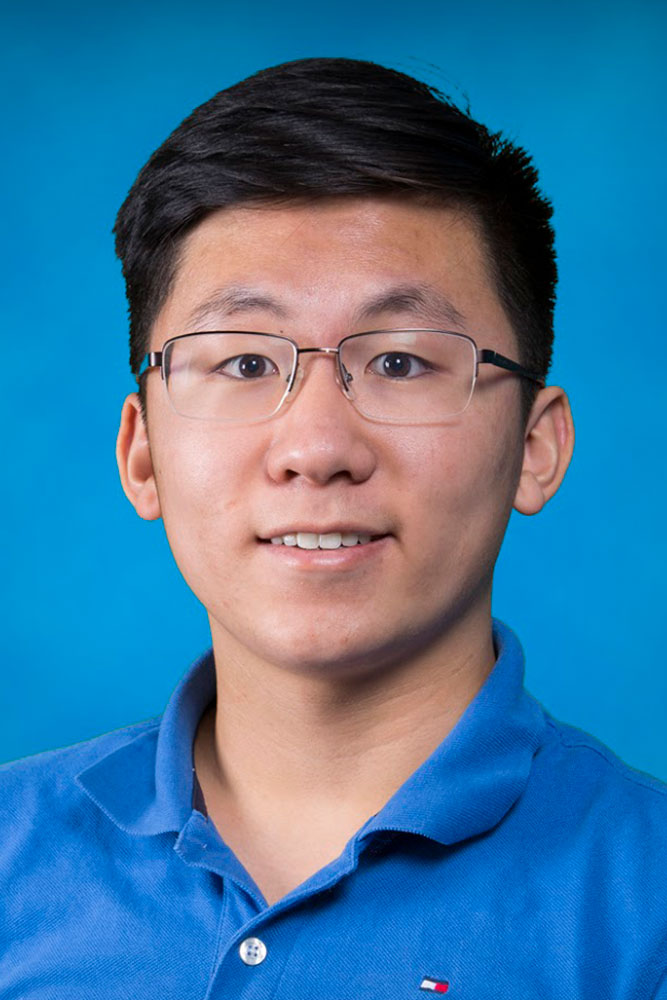 |
Anthony Cheng ’20Materials Science Advisor: Audun Botterud, Principle Research Scientist, Laboratory for Information and Decision Systems Renewable energy sources and pricing of energy in retail markets My research focused on helping consumers and utilities optimize their net utility by creating better pricing structures for electricity use. The ultimate goal for this research is to create models that consider the ability of consumers to change their behavior based on energy prices at a given moment in time. I focused on creating customer personas to describe the various economic paradigms by which customers intend to maximize utility (cost, convenience, greenhouse gas emissions, etc.). I primarily focused on performing primary literature review and researching representative electric load profiles. These load profiles will be the critical inputs into models, as the demand of each type of customer will heavily influence how they respond to other elements in the model. I’m excited to continue this research and begin to start building models. |
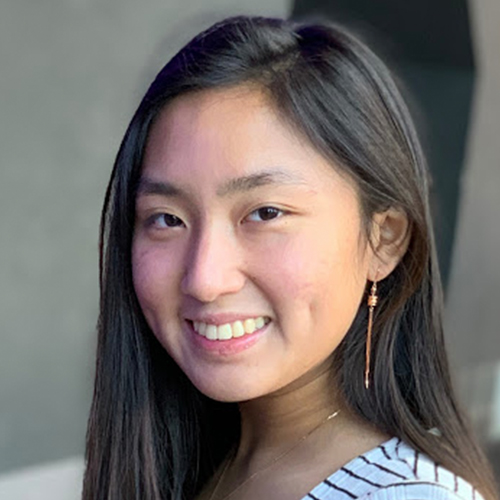 |
Vivian Cheng ’23Civil and Environmental Engineering Advisor: Robert C. Armstrong, Director, MIT Energy Initiative Scalable low-carbon energy system optimization Energy system optimization models can be used to help mitigate climate change by identifying cost-effective pathways for decarbonization. These models are often limited by computational intractability resulting from spatiotemporal complexity. As a result, this project is focused on improving the modeling capability of large-scale energy system optimization models through dimension reduction. We tested various clustering techniques to construct representative scenarios with the least size that produce outcomes similar to those yielded by the original optimization model with the full time series inputs. Through this UROP, I had the chance to explore the intersection of sustainability and technology, as well as learn how basic machine learning principles can be applied to real-world problems. |
 |
Sarah Chieng ’23Computer Science and Engineering Advisor: Saurabh Amin, Associate Professor, Civil and Environmental Engineering Machine learning for electricity theft identification This project used machine learning and computer vision tools to detect cases of electricity theft and analyze the placement of pre-existing power lines. We accomplished this by evaluating images of power lines to identify cases where nearby vegetation was too close and energy lines exhibited signs of tampering. A machine learning tool used in imaging processing called a convolutional neural network was designed and developed to analyze the images. |
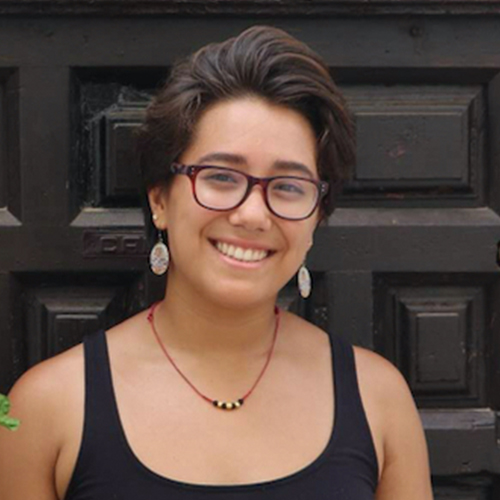 |
Jessica Cohen ’22Material Science and Engineering Advisor: Karthish Manthiram, Warren K. Lewis Career Development Professor, Chemical Engineering Electrochemical benzylic C-H activation: Oxygen atom transfer to xylene Chemical manufacturing has a large carbon footprint due to current thermochemical methods of production. Reducing emissions and being able to make products without having to use harsh operating conditions is very attractive to companies and industries looking to lower their carbon footprints and help fight climate change. Electrochemical oxidation of relatively simple molecules with renewable energy is a sustainable way of using a feedstock to produce valuable chemicals for various commercial industries. My team focused on using xylene and simple molecules like water to create more valuable products such as tolualdehyde and, perhaps one day, terephthalic acid. I personally focused on exploring the substrate scope and the effects of pH on the cell and attempted to look closer at the mechanism behind the oxygen transfer to xylene. We found that more basic conditions were bad for the cell; that it is difficult to oxidize past tolualdehyde with our current configuration; and that it is hard to map out the process from start to finish using our method. Because this particular UROP was near the end of the research process for this project, I gained unique insights into the kinds of replications and tests that are necessary to write a paper and learned about the publishing and concluding side of research. |
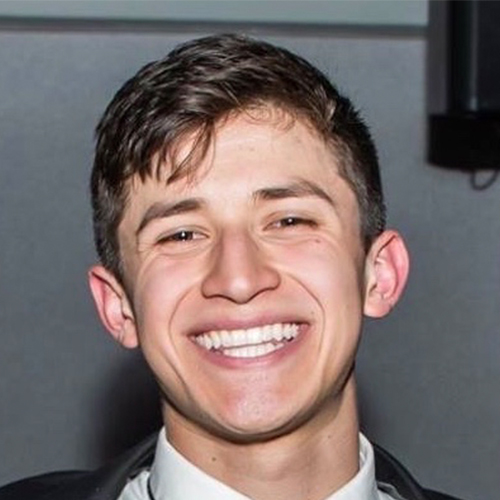 |
Alejandro Diaz ’21Electrical Engineering and Computer Science Advisor and Direct Supervisor: Eric Verploegen, Research Engineer, MIT D-Lab Electronic control system for evaporative cooling chambers for improved vegetable storage in low-income rural communities When affordable and effective post-harvest storage solutions are not available or affordable, people living in off-grid rural communities will often experience spoilage of fruits and vegetables, loss of income, lack of access to nutritious foods, and large amounts of time spent purchasing and selling produce. Evaporative cooling devices have the potential to solve these problems. Under the supervision of Eric Verploegen, I worked to create an optimized electronic evaporative cooling system for use in these regions. I have written the code for the electronic system as well as implemented data storage, a backup battery system, a user interface, and data transfer for later analysis. I have conducted research on moisture sensors and relays in order to find the optimal devices for our project. I set up the control system to turn on the fan and pump via the microcontroller with manual override switches. We are currently working to refine the control decisions. We know that evaporative cooling is effective and now it is a matter of optimizing the process as well as making it more robust. Through this UROP, I gained knowledge of system integration as well as received an inspiring look at how my major can be used for the betterment of the human condition. |
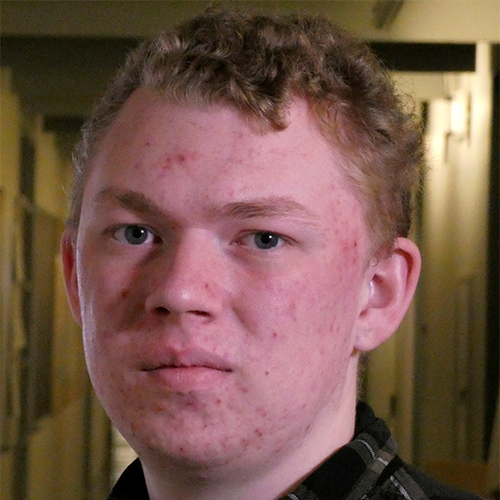 |
Makita Erni ’22Mechanical Engineering Advisor: Amos Winter, Associate Professor, Mechanical Engineering Prototype design of a solar-powered drip irrigation system for smallholder farmers in Sub-Saharan Africa This project is part of a Global Engineering and Research Lab effort to create a relatively cheap drip irrigation system for farmers in Sub-Saharan Africa. It uses solar panels to provide power to a pump and possibly even power electronics in the farmer’s home. I worked to design the electronics that control energy flow between the system’s solar panel and pump. Specifically, I looked at the maximum power point tracking (MPPT) and the motor controller. The MPPT is especially important for this system since it will allow the most power from the solar panel to be put to use. To minimize the cost and power loss, I worked to use the motor controller as the MPPT in addition to being used as the motor controller. |
 |
Enrique Esparza-Villarreal ’23Mathematics Advisor: David Keith, Assistant Professor, MIT Sloan School of Management Use of exclusive and pooled ridehailing services in three Mexican cities Greenhouse gas (GHG) emissions present a huge problem in our fight against climate change. My UROP explored the effects of introducing pooled services into cities with an already present, exclusive ridehailing market. We found that there is a willingness to exchange exclusive trips for pooled trips given the right incentives, even though currently much more people use exclusive services. If we can figure out how to get many people to substitute pooling for exclusive trips, ridehailing services could reduce GHG emissions from cars significantly. During the UROP, I regularly attended meetings with our ridehailing cooperators, researched our case study cities, and ran data analysis on our survey results. This experience helped me improve on my organizational skills and introduced me to the work that goes behind the scenes when conducting a research project. |
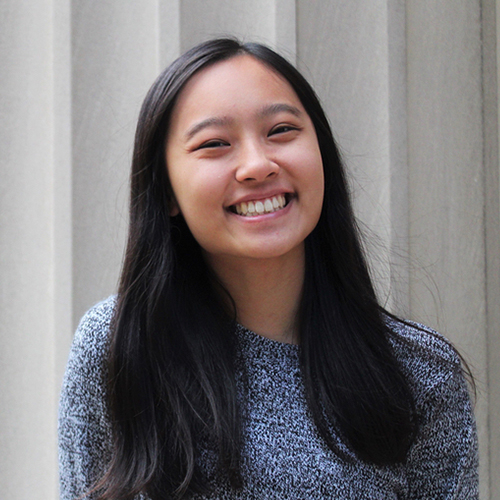 |
Emily Fang ’23Mechanical Engineering Advisor: Yang Shao-Horn, W.M. Keck Professor of Energy, Materials Science and Engineering Improving phase stability of semi-solid electrode for flow battery application The purpose of this project is to develop sustainable semi-solid flow batteries by determining the effect of interparticle attraction on phase stability in flow through thin channels. The prevention of phase separation is essential in semi-solid flow battery operations, which are used for large-scale energy storage of renewable energy, where generated energy must be stored for later use because the highest energy production hours do not correspond to the highest energy generation hours. I worked to find an optimal carbon black suspension for flow through various concentrations of colloid, polymer, salt, and pH by looking for patterns in conductivity to optimize flow. Working on this project gave me a new appreciation of energy as an intersection of mechanical engineering, chemical engineering, and materials science; and I hope to learn more about renewable energy storage and implementation in the future. |
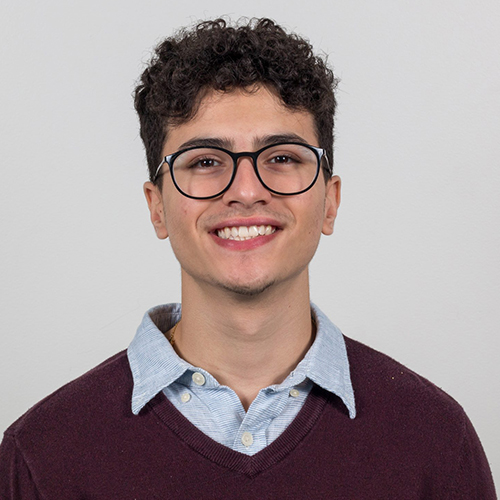 |
Rafael Fernandes ’23Mechanical Engineering and Electrical Engineering and Computer Science Advisor: Christoph Reinhart, Professor, Architecture Developing a web tool to support climate responsive design Assisted with the development of a browser-based climate-responsive design tool for the MIT Sustainable Design Lab. This tool allows individuals without access to advanced design tools and programs to run simulations of energy efficient buildings. Thus, promoting climate-responsive building design that save energy and cost while also reducing carbon emissions. |
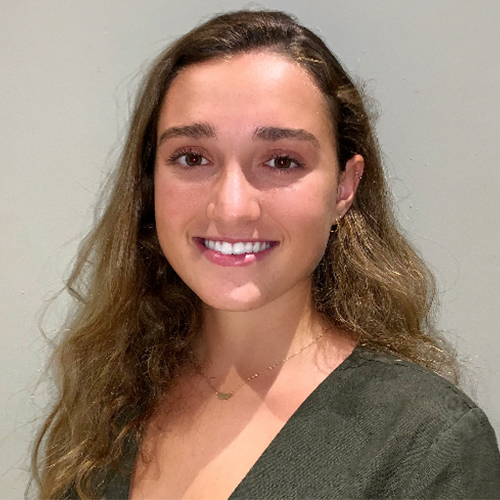 |
Ana Fiallo ’22Urban Science and Planning with Computer Science Advisor: Saurabh Amin, Associate Professor, Civil and Environmental Engineering Georegistration of CAP imagery for cyber-enabled disaster relief In the wake of recent natural disasters, we have become more aware of the instability and lack of resilience of pre-existing systems, such as electrical grid infrastructure, in the face of extreme weather conditions. My research project aimed to discover new methods of resilience in power systems, specifically in finding a way to efficiently identify areas of destruction and sources of malfunction in large power systems through aerial photography in order for a speedy, optimal response. To achieve this, we explored the applications of convolutional neural networks to aerial imagery analysis by training a machine learning model to identify buildings, roads, debris, and destruction in power systems (broken power lines, cable towers, and other obstacles). This solution seeks to facilitate quick disaster relief, as well as ensure the provision of more reliable energy during the most crucial times of natural disasters. |
 |
Andrea Garcia ’22Electrical Engineering and Computer Science Advisor: Luis Velasquez-Garcia, Principal Research Scientist, Microsystems Technology Laboratories Developing processes for biomass-based feedstock in lab Plant-based biomass consumption has the potential to be a significant source of renewable energy but needs to undergo improvements to be employed on a larger scale. This project sought to develop new methods of producing plant-based biomass fuels in order to reduce stress on agricultural systems. |
 |
Irin Ghosh ’21Computer Science and Engineering Advisor and Direct Supervisor: Giuseppe Romano, Research Scientist, Institute for Soldier Nanotechnology Developing a fast, JAX-based simulator of devices for solar energy conversion The purpose of this UROP was to develop a solar cell simulator based on JAX—a Python-based framework which supports hardware-agnostic code and automatic differentiation. I worked on the existing code of the solar cell simulator by initially debugging the implementation so that it works for all cases, and then by JAXifying the code and benchmarking. I gained a lot of knowledge about how solar cells work, the numerical analysis methods used in simulations, and this new framework, JAX. |
 |
Johaun Hatchett ’21Physics Advisor and Direct Supervisor: Robert Jaffe, Jean and Otto Morningstar Professor of Physics, Physics Evaluating the possibilities of gravitational potential energy as a mechanism for large-scale energy storage in electric grid applications Gravity energy storage is a novel and potentially promising method of storing electrical energy for later use. These storage technologies use grid electricity to lift and suspend heavy masses, thereby storing energy as gravitational potential energy. As these masses are lowered to their resting position, their potential energy is converted to usable electrical energy, much like a giant rechargeable battery. Since renewable energy sources are often intermittent, large-scale storage devices can improve their reliability and help them phase out fossil fuels. My work specifically involved researching startup companies’ storage technology proposals and assessing their proposals on both physical and economic fronts. Through this UROP, I have been able to improve my technical writing skills, and I have broadened my interdisciplinary understanding of sustainability. Thanks to my experiences, I have chosen to pursue a career in academia so that I may continue to contribute to sustainable solutions through my research. |
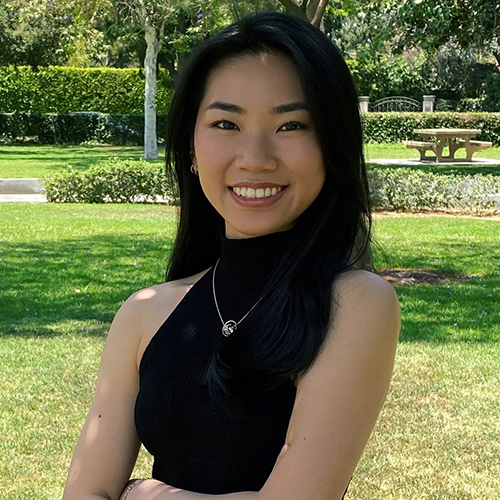 |
Destinee Hung ’22Chemical Engineering Advisor: Fikile Brushett, Associate Professor, Chemical Engineering Redox flow membrane performance review My project involved the study of redox flow batteries. One of its prospective uses includes large-scale storage of renewable energies such as solar or wind—which are only available intermittently. By storing these energies, we can harness renewable sources of power even when they are not readily available. During my UROP, I studied the different performance parameters of membranes, which are an integral part of redox flow batteries. The longevity and efficiency of energy extraction of the battery depends heavily on the membrane that is used. My role was to research membranes of various compositions and investigate how the performance changed under different experimental conditions, such as varying pH or concentration of solutions. By the conclusion of my work, I constructed various graphs from data sheets that displayed the pros and cons of each membrane. One of my main takeaways from this project was learning how to approach and read technical papers. |
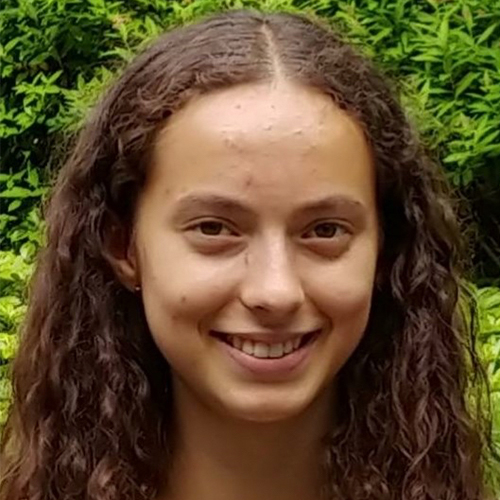 |
Skyler Jones ’22Chemistry Advisor: Keith Nelson, Haslam and Dewey Professor, Chemistry Polaritons in 2D perovskites Perovskites are a novel semiconductor material that have potential for use in inexpensive solar cells and LEDs due to several unique optical properties. One such property is perovskites’ ability to form polaritons, a type of quasiparticle formed by light-matter interactions in a microcavity. This research aims to examine and manipulate polariton propagation in perovskite microcavities. I first fabricated 2D thin films and microcavities with perovskites, then used 2D photoluminescence and diffusion mapping to characterize the optical behavior across the material. I then used k-space laser spectroscopy to observe polariton formation in the perovskite microcavities. These measurements gave us key insights into the cavity conditions to use in the continuation of this research, when we will fabricate multi-length microcavities in an attempt to manipulate polariton pathways across the perovskite. I have enjoyed having the opportunity to learn the techniques used across a broad range of solar and LED device fabrication, as well as gaining a deeper understanding of the fundamental physics of perovskite semiconductors. I look forward to continuing this research throughout the next year, and plan to pursue a career in fundamental research on photovoltaic materials. |
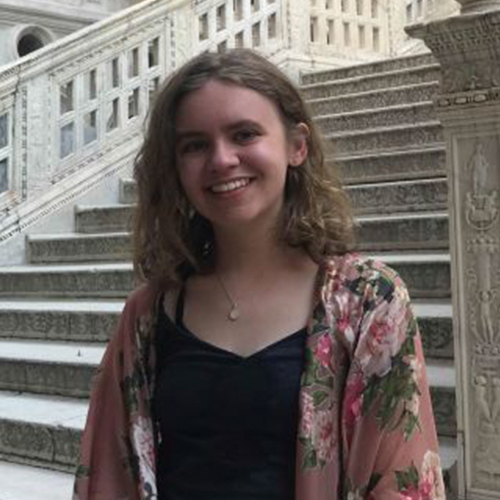 |
Violetta Jusiega ’21Computer Science and Engineering Advisor: Christoph Reinhart, Professor, Architecture UBEM.io web application development UBEM.io allows users to create an urban building energy model for a neighborhood or city using open-source map and building data. The energy model can then be used for further energy analysis. For this project, I worked on designing and building the web application so that it would be easy and intuitive for anyone—from researchers to policy makers—to use. I learned a lot about what it means to create an application for somebody who might not be very familiar with the technology; there was a big emphasis on wording and a clean user interface. Overall, I really enjoyed working on this project. I was given a lot of ownership over the design and implementation, and I got to learn a lot about urban energy modeling. |
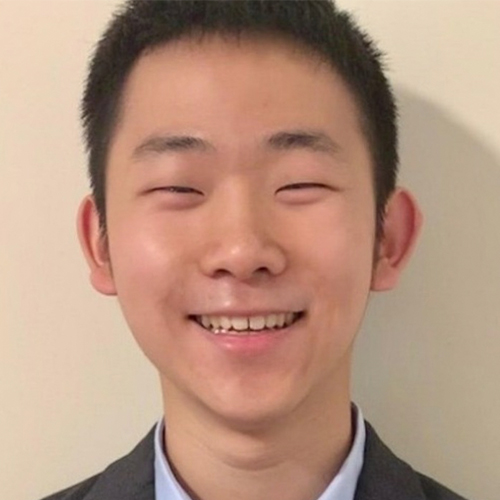 |
Ian Lee ’23Electrical Engineering and Computer Science Advisor: Robert C. Armstrong, Director, MIT Energy Initiative A reinforcement learning approach to predicting general energy provision pattern Undeveloped rural areas rely on off-grid technologies for affordable electrification. To optimize their distribution, a Reference Electrification Model (REM) is used to identify the least-cost design in bringing electricity to a population. This project worked to develop a foundational machine learning algorithm to help with the design of micro grids and electrification planning of REM. |
 |
Heidi Li ’22Materials Engineering Advisor and Direct Supervisor: Valerie Karplus, Assistant Professor of Global Economics and Management, MIT Sloan School of Management Transitioning Pennsylvania to a low-carbon economy I worked on the Roosevelt Project’s Southwestern Pennsylvania Case study. The goal of this project is to help Pennsylvania transition to a low-carbon economy. The case looks at the economic, technological, political, and social characteristics of the region to inform policies and technology pathways for the state. My project was to outline the baseline economic (GDP and employment) and carbon emissions of each industry and county. I projected pathways forward to decarbonization, under a business-as-usual scenario and a deep decarbonization scenario. Finally, I looked at the petrochemicals industry to understand how this emerging industry would impact Pennsylvania’s efforts to decarbonize in terms of emissions and economic outcomes. |
 |
Fiona Lin ’23Computer Science and Molecular Biology Advisor: Robert C. Armstrong, Director, MIT Energy Initiative Investigating U.S. electricity grid: Data collection on sources and costs This project aimed to investigate how electricity grids are affected by electricity infrastructure, policies, and technological progress. In particular, Lin researched the details of these grids, specifically to determine their source of electricity and how much the electricity generated from these grids cost to consumers. This data was then added to a database collection for further organization and analyzation. |
 |
Alexandra Marsh ’21Computer Science Advisor: Valerie Karplus, Assistant Professor of Global Economics and Management, MIT Sloan School of Management A financial transparency tool for MIT I worked to solve the lack of understanding of MIT’s different sources of research funding by improving data visualization on an existing website. I helped fix existing bugs and implement new features and visualizations, which resulted in a more intuitive interface. In implementing one representation of the data, I found that many more departments are sponsored by defense organizations than I had previously thought. I gained a much more thorough understanding of d3 (a code library designed for data visualization), and a more refined sense of how visualizations can communicate different messages. |
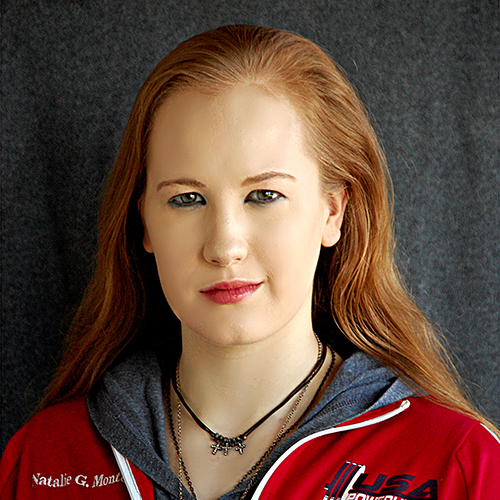 |
Natalie Montoya ’22Nuclear Science and Engineering Advisor: R. Scott Kemp, MIT Class of ’43 Professor of Nuclear Science and Engineering Analyzing vulnerabilities in the U.S. electrical grid As we move toward decarbonization, grid reliability will be of the utmost importance as electricity replaces both gas for heating and oil for transportation. The goal of this project is to identify and research grid vulnerabilities and current utility and government actions in order to develop models to identify areas for potential improvement. Over IAP, I worked on the project’s baseline research. I interviewed utility executives about grid security renewable generation and organized a report on their remarks. I also examined historical examples of cases of attacks on national electrical grids and researched the potential casualties of a limited nuclear attack to use as a basis of comparison for how bad an attack on the electrical grid could be. We’re still in the initial stages of the project, but I’ve gained experience in communicating with industry experts and creating models. |
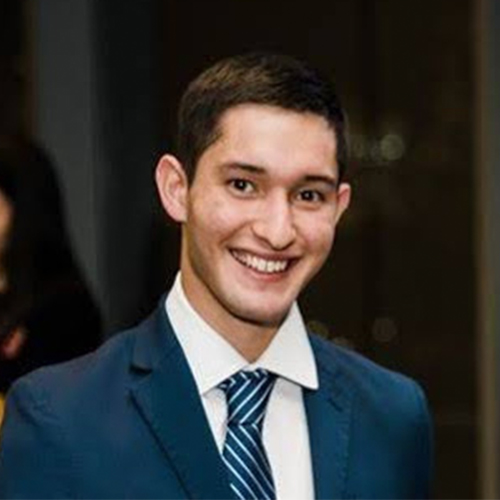 |
Manuel Morales ’22Chemical Engineering Advisor and Direct Supervisor: David Hsu, Associate Professor, Urban Studies and Planning Analyzing indoor air quality of retrofitted buildings The purpose of this project is to measure changes in air quality in a New York City residential building that is being retrofitted for full electrification and passive house standards. Working with an affordable housing community partnership, Professor Hsu’s team has installed air quality and gas sensors in a low-income, four-story residential building before, during, and after the retrofit. My work consists of analyzing and visualizing indoor air quality data from these sensors. Initial data has revealed that individual apartments within the building have differing levels of air quality. My work will enable us to visualize the extent to which people within the same building have different exposures to air pollution due to multiple air events in different amounts. I have also been helping to develop a health impact methodology, both in English and Spanish, to be deployed by social workers with which we are collaborating. The information gleaned from deploying this methodology will augment our data and provide insights on the air pollution events unique to each apartment. |
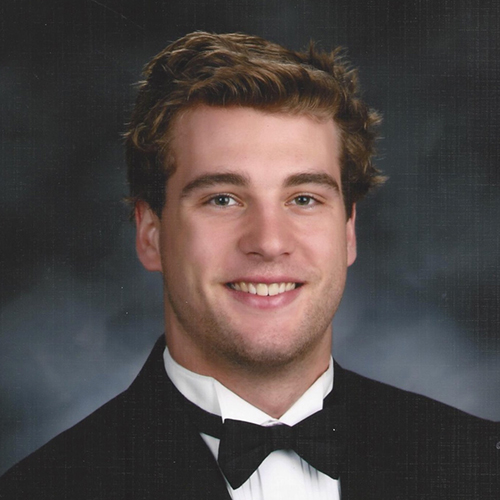 |
Ryan Nall ’22Mechanical Engineering Advisor: Ahmed Ghoniem, Ronald C. Crane Professor, Mechanical Engineering; Director, Center for Energy and Propulsion; Director, Reacting Gas Dynamics Laboratory Automation and control system for a decentralized biomass/renewable energy system I assisted in performing experiments involving MIT’s torrefaction reactor and attempted to automate certain data to record aspects of the experiment. I also helped to run the reactor and analyze the product using calorimetry and thermal gravimetric analysis (TGA). We gathered data using a small-scale reactor to help the U.S. Forest Service learn how to effectively use their planned large-scale reactor. We recorded various pieces of data, including burn time and temperature for different biomasses. By providing the U.S. Forest Service with a database regarding how different biomasses burn, they can more readily implement the large-scale reactor. I learned about calorimetry, TGA, and soil sequestration—the process of turning biowaste into a carbon-negative fertilizer. |
 |
Lance Neil ’20Mechanical Engineering Advisor: Douglas Hart, Professor, Mechanical Engineering Investigating the production of hydrogen through the hydrolysis of scrap aluminum The purpose of this project is to produce hydrogen through hydrolysis of scrap aluminum. By producing hydrogen through this method, hydrogen can be sustainably produced for use in creating usable energy while also providing a use for scrap aluminum that doesn’t make it to the recycling center. My work was to assist my supervisor in performing the hydrolysis experiment while streamlining the experimental process where possible. We have made progress toward understanding how impurities in aluminum affect our experiment. Different alloys produce different volumes of hydrogen and take longer to finish reacting. I learned a lot during my UROP experience, mostly related to the properties of aluminum alloys and the effect of grain size on corrosion and hydrolysis reaction rate, and how to change the grain sizes of alloys. |
 |
Alec Nguyen ’22Chemical Engineering Advisor: Fikile Brushett, Cecil and Ida Green Career Development Chair, Associate Professor of Chemical Engineering Life cycle emissions analysis of current and future hydrogen fuel cell vehicles This project focuses mainly on studying the end-user applications of hydrogen fuel, specifically in the transportation sector and the feasibility of a potential hydrogen economy. I have compiled data and generated an analysis of the life cycle emissions for a variety of vehicle types, including fuel cell electric vehicles (FCEV), battery electric vehicles, internal combustion engine vehicles, hybrid vehicles, and plug-in hybrid vehicles. I also analyzed the assumed cost of ownership of each vehicle type considering purchase price and lifetime refueling costs. Currently, the project has taken a deeper dive into specifically analyzing the current and predicted efficiencies of fuel cells as well as studying the manufacturing process of FCEVs. Through this research, our team has come to understand that many of the components specific to compressed hydrogen gas FCEVs cause the manufacturing process for these vehicles to be highly carbon dioxide intensive and costly. The project is now focused on researching potential alternatives to the current manufacturing processes which include looking at completely new hydrogen fuel types. |
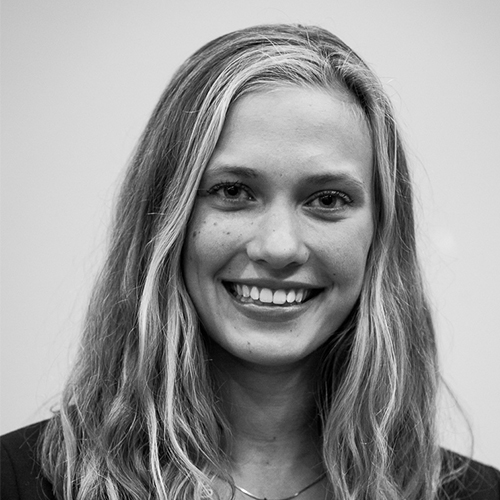 |
Natalie Northrup ’22Civil and Environmental Engineering Advisor: Robert C. Armstrong, Director, MIT Energy Initiative Database creation for developing a tool to perform systems-level energy analysis Consumers, governments, and organizations are facing an ever-increasing demand for sustainable alternatives for energy consumption, but as more products enter the market, it is difficult to know which have the smallest environmental impact. Life cycle assessment (LCA) tools help to advise these groups by tracing electricity, industry, and transportation market emissions from cradle-to-grave, in order to quantitatively rank products and practices to better inform energy-sector decision-making. Most LCA is specific to one product, but comprehensive systems-level analysis is necessary to truly understand where the need is for technological innovation and improvements. To address this, I have been working to build a database of natural gas extraction and processing emissions on the Norwegian Continental Shelf, to provide inventory inputs to MITEI’s SESAME LCA tool. Additionally, I transferred a photovoltaic life cycle assessment tool from Excel to the SESAME tool in Python. From this experience, I have learned about life cycle stages, data structuring and searching, data analysis in Python/pandas, and the complexities of the energy industry. |
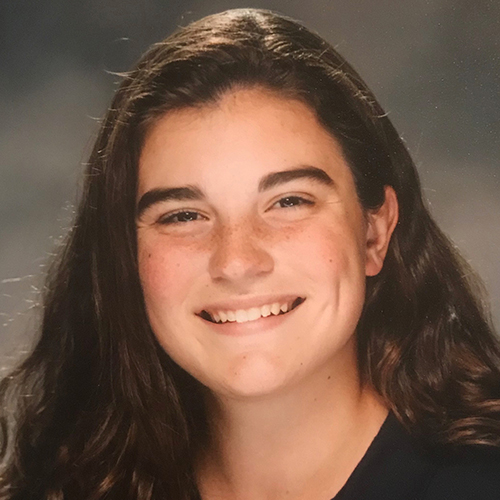 |
Christine Padalino ’22Chemical Engineering Advisor and Direct Supervisor: Eric Verploegen, Research Engineer, MIT D-Lab Building evaporative cooling chambers for improved fruit and vegetable storage I built an evaporative cooling chamber on the campus of the University of Nairobi to act as an experimental chamber to provide insights into improving the performance of this technology. I spent three weeks with a team of students, my PI, and collaborators in Kenya constructing a modular, room-sized charcoal cooler to enhance our research into evaporative cooling for improved post-harvest storage of fruits and vegetables. I also visited the rural farming cooperatives that utilize this technology to learn about how they use the cooling chamber, as well as their desired improvements. We confirmed that the design issues being researched, such as substituting charcoal, improving air flow, and implementing scalability, were all important problems to solve. I gained a strong appreciation for working with global partners, as well as a fantastic experience in a new culture. |
 |
Seeta Patel ’20Materials Science and Engineering Advisor: Christoph Reinhart, Professor, Architecture Literature review for online learning best practices The purpose of this project was to compile a report detailing the best practices for an online learning course. The MIT Energy Initiative is creating an online MicroMaster’s program to be made available globally via edX. Several existing MIT courses from different departments will be incorporated into this program. My role was to perform an extensive literature search on what makes an effective online learning course. I extracted the necessary information from these reports to record the key characteristics of an effective online course, and how to evaluate the effectiveness of such a course. I focused on important features, such as the methods and quality of conveying the class content, the format of assignments, and other metrics that emerged over the course of my research. The primary deliverable from my literature search was an annotated bibliography of 15-25 sources. I also created a checklist of pointers to be used by beta testers of the online version of Professor Christoph Reinhart’s course 4.464x (Sustainable Building Design). The checklist will guide the beta testers and enable them to evaluate the effectiveness of the course. This UROP improved my understanding of how online learning compares to in-class learning. |
 |
Shreyaa Raghavan ’23Cognition and Computation Advisor: Tonio Buonassisi, Professor, Mechanical Engineering Tackling data scarcity in materials research: Using semi-supervised, adversarial training to improve classification of X-ray diffraction patterns When applying deep learning in material characterization tasks, generating and manually labeling experimental data can be expensive and time-consuming. This is especially not an option when large amounts of data are necessary to obtain accurate results from a machine learning model. For this reason, the idea of training deep learning models with simulated data is appealing to tackle data scarcity, particularly when the simulation data can be generated easily and cheaply. A recent study about X-ray powder diffraction (XRD) pattern classification found that the simulated XRD patterns provide a limited improvement on accuracy due to the differences between simulated data and experimental data. To close this gap, we explore a Generative Adversarial Network (GAN) to augment the simulated XRD patterns with “realistic” features from experimental data, so that the training of the highly-accurate classifier can be completed with the simulation data only. The GAN consists of a refiner network and a discriminative network with an adversarial loss, where the refiner network reintroduces those realistic features, and the discriminative network penalizes large changes between the original simulated data and the refined data. This approach has the potential to accelerate characterization tasks with machine and deep learning and can be generalized to tackle data scarcity in other fields as well (especially where there is a lack of a large and labeled dataset). |
 |
Rahul Ramakrishnan ’21Materials Science and Engineering Advisor and Direct Supervisor: Eric Verploegen, Research Engineer, MIT D-Lab Modeling of heat and mass transfer of evaporative cooling devices for improved vegetable storage in low-income rural communities The primary goal of my project was to model evaporative cooling devices that can allow farmers to affordably and effectively improve the storage shelf life of their produce using an energy-efficient method of cooling. My computational modeling work helps understand the optimal setup of an evaporative cooling device in a target environment, and later incorporate design modifications into a physical chamber. I analytically determined the optimal design parameters and advised materials selection for constructing a device. Through the course of the UROP, I was able to apply my heat and mass transfer skills from the classroom into a project with a large impact, allowing me to better understand how to use technical skills in a device-focused context. |
 |
Gerhard Rencken ’22Mechanical Engineering Advisor: Leon Glicksman, Professor, Architecture, Mechanical Engineering Using CFD to investigate the effect of ventilation on the spread of Covid-19 The airborne spread of Covid-19 is very poorly understood, and most ventilation guidelines are based on speculation and gut feel. Overcompensation causes an increase in energy consumption for thermal air conditioning. Using computational fluid dynamics, we simulated the spread of the virus through aerosols in indoor office and classroom environments, focusing on the effects of thermal plumes around people in the space. We then searched for existing data on airflow patterns in the vicinity of people, to confirm our results. We are continuing our research, looking at different spaces, to obtain more general results, which can be used to better advise ventilation practices, and reduce energy consumption. I would like to thank MITEI for enabling this incredible opportunity to expand my computational skills while adding a meaningful contribution to the current pandemic. |
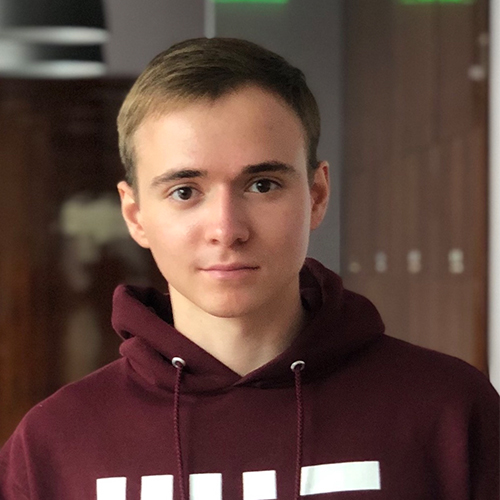 |
Nikita Romanov ’23Electrical Engineering Advisor and Direct Supervisor: Tomas Palacios, Assistant Professor, Electrical Engineering and Computer Science Magnetic energy harvesting for increasing electric motors efficiency The goal of our project was to create a compact energy harvesting device that would use the electromagnetic energy inside a motor, which is otherwise wasted, to power the sensors. This device would not require an external power input and could be installed in most types of motors—old and new. Over IAP, I modeled the energy harvesting properties of the system, investigated the behavior of the magnetic field of a rotating permanent magnet, and started running computer simulations of the prototype. This experience improved my understanding of power electronics and energy harvesting, connecting me with many fascinating people in those fields and made me love electrical engineering even more. |
 |
Emma Rutherford ’23Mechanical Engineering Advisor: Leon Glicksman, Professor, Architecture, Mechanical Engineering CFD studies of Covid-19 aerosol dispersion in classrooms and how to efficiently circulate clean air Covid-19 has raised questions regarding how to keep people safe from virus-containing aerosols. As schools and places of work resume in-person activities, the worry of virus transmission through tiny droplets carried by the air is being combatted by maximizing the ventilation rate and allowing no air to be recirculated. This precaution comes with an immense increase in energy usage. Our goal is to use computational fluid dynamics simulations to better understand how aerosols containing virus particles disperse throughout buildings under different systems of ventilation. We hope to use these simulations to formulate scientifically backed and more energy efficient heating and cooling systems. Additionally, we aim to better understand how aerosols spread in public places which can be applied directly to how we should set up classrooms to minimize the possible spread of Covid-19. |
 |
Michael Sutton ’23Electrical Engineering and Computer Science Advisor and Direct Supervisor: David Hsu, Associate Professor, Urban Studies and Planning Political spending of electric utilities The purpose of this project was to investigate the effects that political spending by utility companies has on their regulators. Utilities are a regulated monopoly in the U.S. where regulators set the price of how much utilities can charge users for their energy consumption; but what influences regulator’s decisions on price setting? If the utilities themselves exercise influence over regulators, this poses a conflict of interest as they would consequently be gaining control over price setting in the market that they operate. This is important because as a regulated monopoly, utilities should not determine how much it charges consumers, and if they do, it is important that this be brought to a halt. |
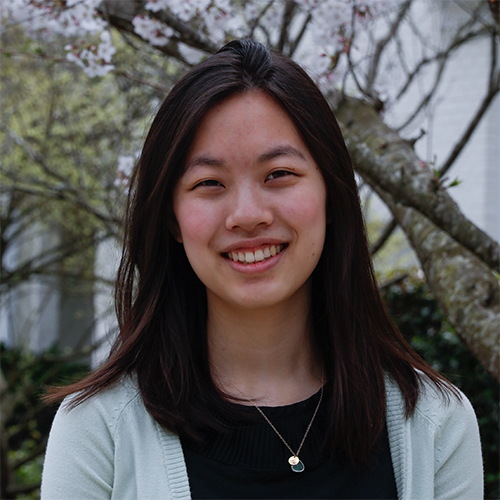 |
Kiera Tai ’22Materials Science and Engineering Advisor: Jeffrey C. Grossman, Morton and Claire Goulder and Family Professor in Environmental Systems and Department Head, Materials Science and Engineering Enhanced cooling in residential and commercial buildings through solid-state geothermal heat transfer Improving building energy efficiency will play a major role in mitigating the effects of climate change. In particular, developing better cooling methods is paramount for significantly reducing carbon dioxide emissions and achieving a more resilient electrical grid. My UROP focuses on the development of a solid-state, fully interconnected geothermal cooling system that channels heat from hot zones of the house into the ground, where it is dissipated. I have been lucky to work on this project since the beginning. In addition to technical skills, this UROP has given me an interest in energy systems and research in general. |
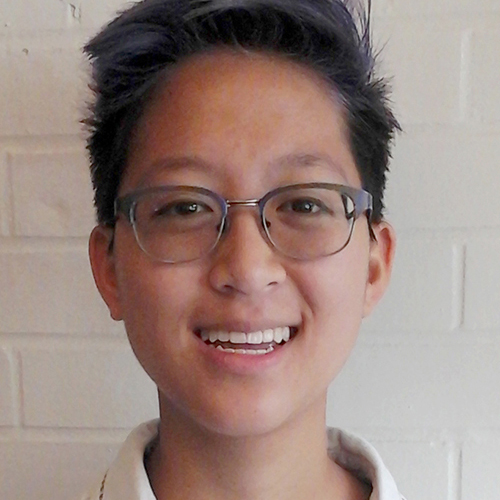 |
Jocelyn Ting ’22Materials Science and Engineering Advisor: Yet-Ming Chiang, Kyocera Professor, Materials Science and Engineering Optimizing the properties of lime from an electrochemical reactor for decarbonizing the cement and lime industries The cement industry is responsible for 8% of global carbon dioxide (CO2) emissions and has been identified as one of the most difficult industries to decarbonize. This is primarily due to the critical step where limestone (CaCO3) must be calcined to lime (CaO). My UROP was focused on editing the properties of lime obtained through an electrochemical dissolution–precipitation process which enables easy sequestration of CO2 and the use of electricity instead of fossil fuels. In particular, we wanted to show that we could produce the extremes in size and morphology of lime. We were successful in precipitating large, 8-15 micron diameter, and small, 250-550 nanometer diameter, hexagonal crystals. In addition, we were able to tailor the particles to grow either as flat plates or thin rods. I learned a lot about the chemistry of precipitation synthesis and the challenges of reducing cement emissions. |
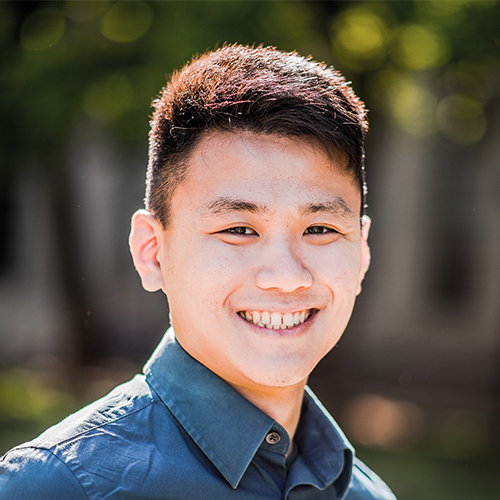 |
Jimmy Tran ’21Mechanical Engineering Advisor: Olivier de Weck, Professor of Aeronautics and Astronautics and Engineering Systems, Aeronautics and Astronautics Developing a platform for expanding AUV exploration to longer ranges (PEARL) Autonomous underwater vehicle (AUV) missions are currently limited in range and duration by battery and data storage capacity. The Platform for Expanding AUV exploRation to Longer ranges (PEARL) is an autonomous floating docking station that can charge AUVs from renewable sources and offload its data via satellite uplinks. I focused on designing and fabricating prototypes to test different docking methods that would enable the AUV to easily and reliably dock with the PEARL platform. From using calculating dimensions for my Froude-scaled model to manufacturing an AUV and platform prototype for pool testing, I learned to use deterministic design to create simple designs and tests that told me a lot about how my design would function if it were used on full-scale AUVs. |
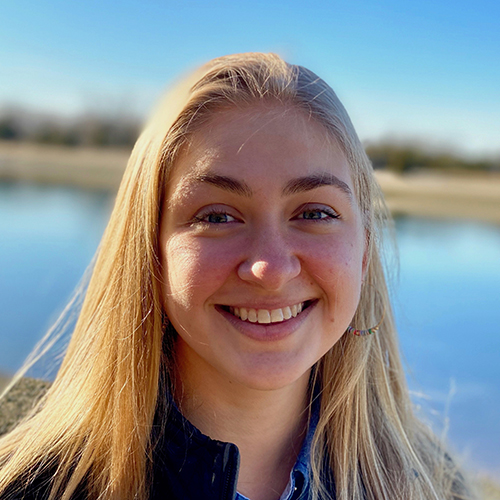 |
Ava Waitz ’21Material Science and Engineering Advisor: Jessika Trancik, Associate Professor, Institute for Data, Systems, and Society Analysis of emissions distributions of leaky technologies I participated in systems-level analysis of energy technologies, focusing specifically on the emissions distributions from several technologies and industries, including vehicles, buildings, coal plants, and the natural gas supply chain. This comparative analysis will be the basis of a paper that will advise and influence regulators of these industries. This research has taught me how to collect and investigate large data sources and how to translate those results into a meaningful message. I am excited to continue this impactful work. |